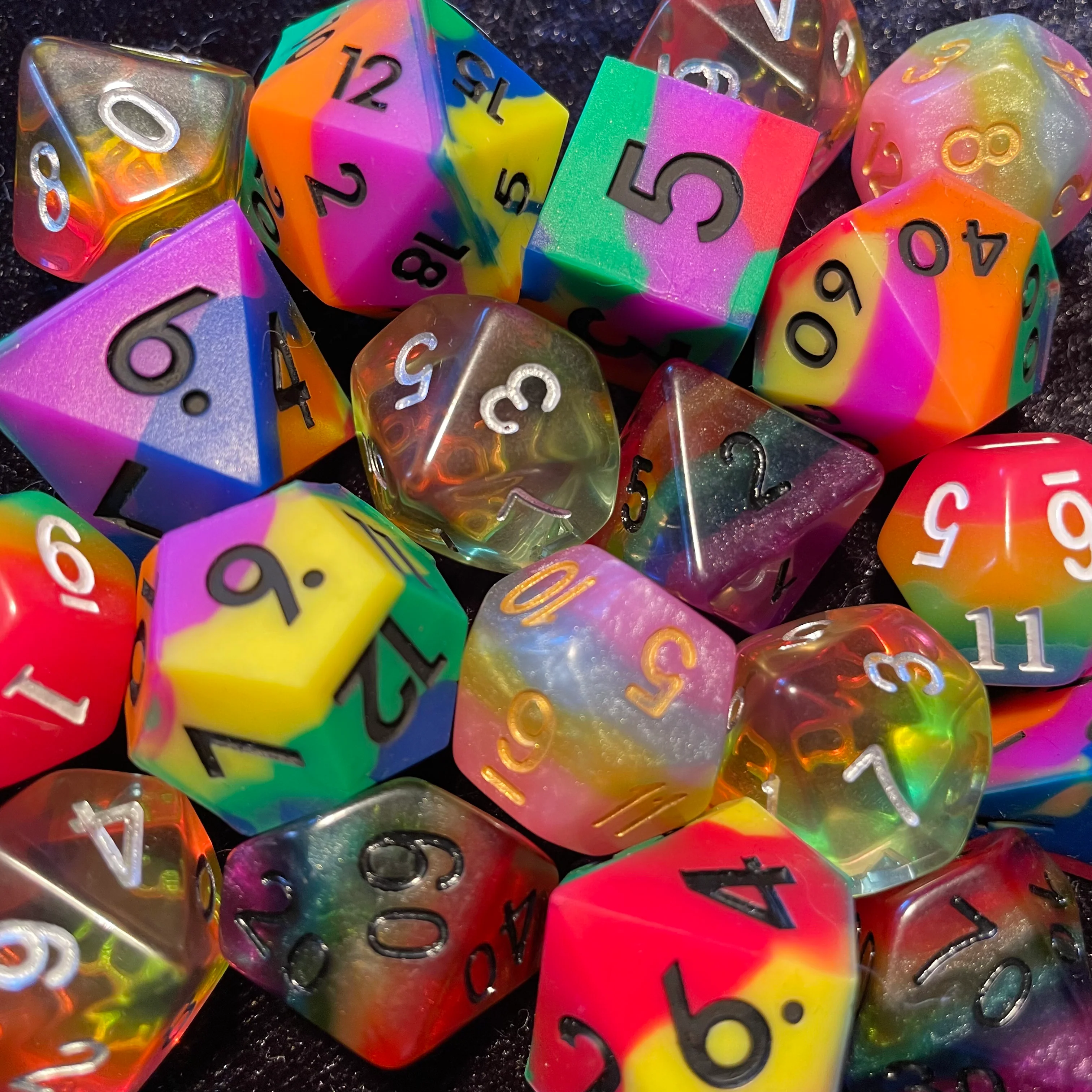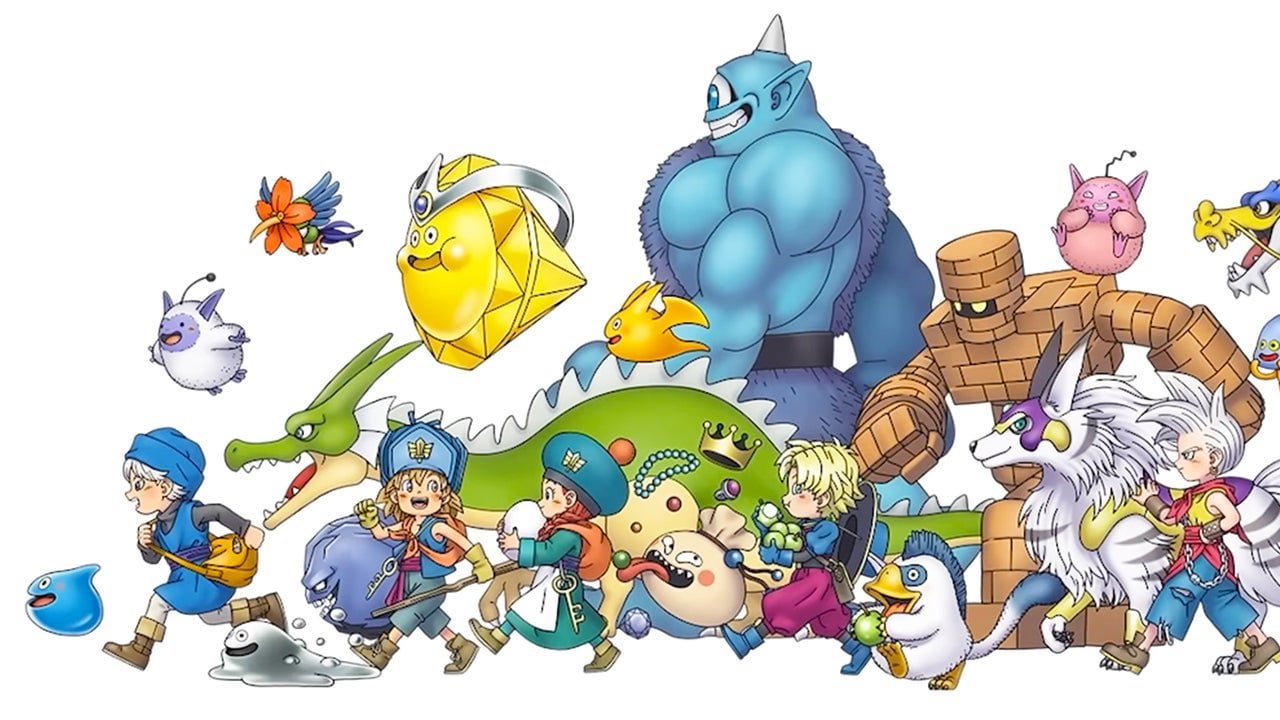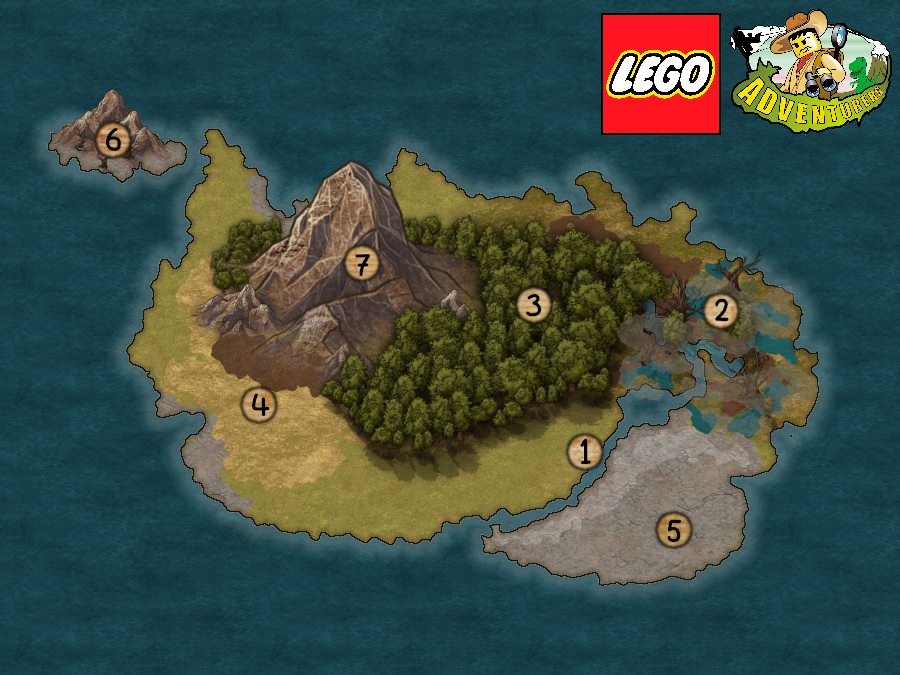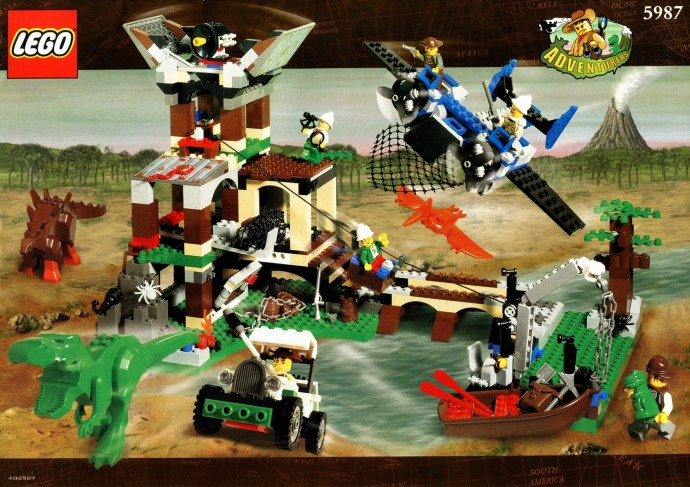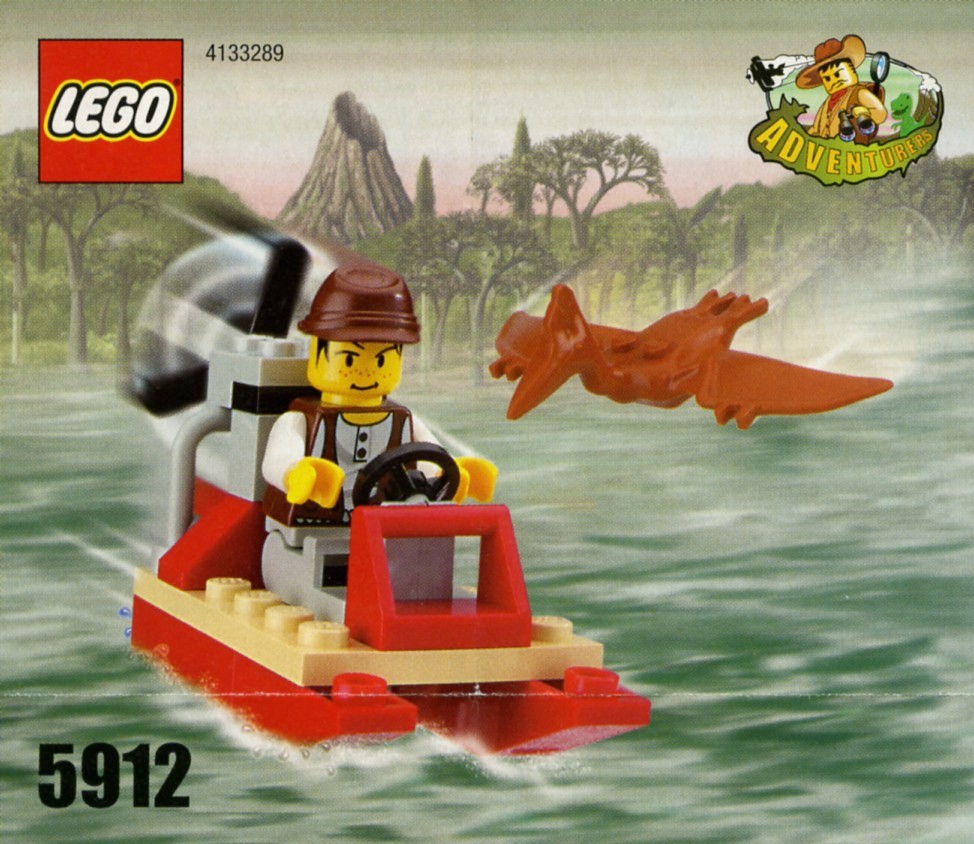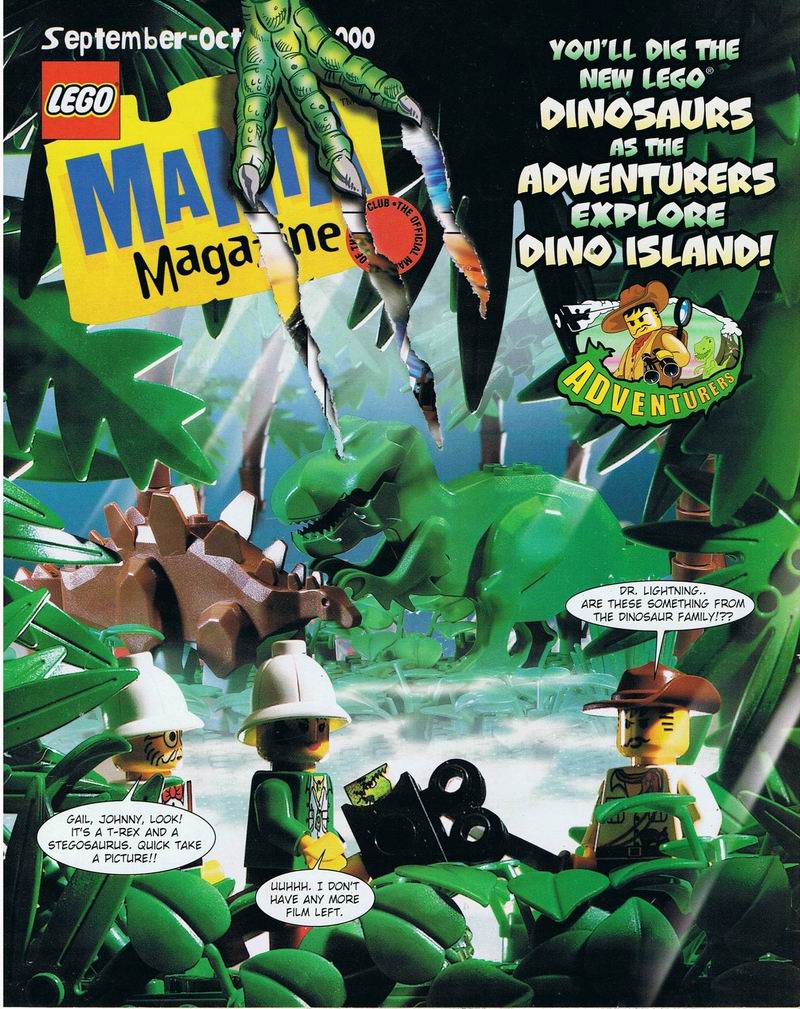Howdy, Farmhands!
A bit of Gadda History before we begin:
As previously mentioned on this blog, 2020 was the year I finally bit the bullet and got into Dungeons and Dragons Fifth Edition. I had been listening to the Adventure Zone Podcast since 2018, and with all of my social events canceled due to The Pandemic, I wanted a hobby I could enjoy with my roommates and online friends. This honeymoon period lasted maybe 4 months until I actually ran Lost Mines of Phandelver, and I immediately turned into a contrarian sicko with a hate for WOTC. Thus began the era of Poasting.
I was a piece of shit on Twitter. I had yet to learn the difference between being rewarded for my intelligent opinions and being rewarded for simply being witty enough to be picked up by the rage machine. But during this time, I spent a good portion of my clout seeking sending out game design thoughts, as if to somehow validate my existence as an angry voice on the internet. Some of those ideas are actually... not bad? Now that I'm looking at them with a significantly clearer head I can see some winners in there. One of my earliest fascinations was with the many things one could do with the humble d6. To that end, I put forward a series of Mini-game like procedures for condensing larger activities into something you do in--between sessions or perhaps as sort of a Mario Party-like grab bag of events. Finally, this bring us to the point of today's blog; I don't have anything better to post, so sure, I'll regurgitate one of those.
SOWING SEEDS
A Minigame for Planting
The original Tweet Thread went as follows:
"Planting d6 minigame where you attempt to cultivate seedlings??? Roll a d6, that's your seed. 1 being a dud and 6 being great! You can choose to roll a second d6 to nurse it to better health, but rolling under the seedlings number OR surpassing a total of 8 means you ruined it? So like, its super easy to upgrade a 1, but more risky the higher the base value it This would tie in to some kind of produce grading system where a top tier plant eventually yields good harvest. I'd probably have 1 die count as a field of ground crops but have each fruit tree get planted and rated individually. Needs some tweaking to really make it work. Maybe some sort of ritual of preparing the ground and watering it to add bonuses to the initial roll"
This is a fine start, but lacks anything solid enough to build a procedure around. Let's start draft 2 by making this a form of Downtime Action, i.e. the time between adventures. Rolling 1d6 for your initial Seed quality is still great, as is choosing to roll a second d6 to nurture it to better health. I believe rolling Under your Seedling's current number might be too harsh; these Downtimes only come every so often. Let's keep the threshhold of failure going over 8, but introduce a degradation mechanic. For every Adventure between Downtimes, roll 1d6 and subtract that value from the Seed's quality. If a Seed remain less than 1 at the end of a downtime, the crop has failed to thrive. This gives players a chance to fix the problem before everything goes completely tits up, as well as incentivizes the initial planting being as high a value as possible before they carry on with their adventuring.
What's the point of this, though? In the original tweet thread, I vaguely hand wave at a scoring system where this process would net you better/more crops from a single seed.
1-2: Poor Quality. You've managed to grow Crop equal to the amount of Seed you started with, but it was hardly worth the effort.
3-4: Fair Quality. You've grown double the Crop per seed, and it's good enough that you'd eat it!
5-6: Great Quality. You've tripled your investment, and 1/3rd of it came out looking better than the average Veg.
7-8: Blue Ribbon. The same as Great Quality, however, 1 piece of Veg came out looking larger, juicier, and tastier than all the others. You might even win an award for it... if you weren't planning on selling it for four times the initial Seed's value.
Further Thoughts:
Time is always a factor in farming, and I want to make use of it. I have no interest in making a formal list right now (maybe later), but different crops requiring 1-3 Downtime Actions to be ready for harvest sounds about right. The 3 Action Crops would require a significant amount of reward for successfully growing them, and with 3 Degradations to contend with, would NOT be simple to produce.
Mid-level play with Hirelings would immediately muddy the waters. This Mini-game as written assumes there's 1 plot of land for 1 player to maintain, but once the party can just Hire A Guy to do things for them, the urge to set them to work in the fields will be strong. My immediate thought is to still require the player to perform the game as written; but hirelings assigned to the fields increases the number of crops that can be planted at once, 1 per hireling, as opposed to making the NPC do all the work offscreen.
I've previously written this d50 table for generating fantastical produce, and included links to other great blogs on the topic of fantasy food and cooking! Give it a read!
This post and others like it are made possible by members of my Patreon,
where you can see Game WIPs and Previews of future blogposts a week early!
Thank you in particular to SethChris93 for your continued support!
Howdy, Farmhands!
For those of you who are fortunate enough to have avoided my ramblings on social media, may God continue to bless you and yours with sweet ignorance. Today's blogpost will have to temporarily expose you to TTRPG Discourse of the Bluesky variety, I'm afraid. I know, I know, you presumably choose to read blogs to avoid using such distasteful websites. There's still time to click off and go read something else. This preamble is mostly dragging out time for you to make your escape.
Not terribly long ago, an individual made a series of Skeets (yes, we call them Skeets) about their experience bouncing off of some OSR products. Assuming you're not reading this in some far off future where said service has completely gone dark (which could be as soon as June, the way online services work in the year of our Lord, 2025) here's a link to said thread. This isn't a sub-post in the slightest, by the way, ACoupleOfDrakes is completely within their right to 1. Dislike a product, trend, or genre and 2. Skeet About It As They Will. The sentiment simply became a hot topic for all of five minutes among people term searching the phrase "OSR," and as such, many of us felt the need to post our Opinions. Naturally, I chimed in so I could feel like a special little boy for an hour.
To DRASTICALLY paraphrase ACoupleOfDrakes' words to quickly establish What my opinions are in reaction to, here's the key statements that caught my attention.
One of the things that keeps me from becoming an OSR guy is how few of
the worlds presented seem like a place I'd like to spend time exploring.
There are notable exceptions....(source)
...I think the thing that makes me most interested in an OSR setting is its ratio of wonder to believability....(source)
...There are a lot of gonzo for the sake of gonzo settings that lose me because I can't imagine what you're supposed to /do/ there.... (source)
...Trying to put into words what divides the things that I like versus the
things that I don't in the OSR space and only coming up with a Calvin
and Hobbes meme about "OSR that's Maps" and "OSR that's Questions." (source)
1. No.
I don't personally believe OSR as a genre needs a ton of cohesive settings, nor that picking out a pre-made setting guide is a necessary step in having an OSR-y experience. There's just something about a self-aware DIY elfgame that's charming all on it's own, y'know? You get your combat rules and your equipment lists and that's kind of all the System needs to do. Half the point of an Old School Game is coming up with your own bespoke fantasy land cobbled together from whatever interests you and your table. You probably have an idea of Where you want to adventure anyway, and you'll purposefully pick modules and beasties that fit that vague impression you have in your mind. The turn to emergent settings being made during play that you see
frequently these days (Questions instead of Maps) makes a lot of sense.
Sure, theres people wanting their Greyhawks and their Spelljammers and whatnot, but a large swathe of OSR systems are either compatible with those older works out the gate or stupid easy to convert. Any setting with a travel system worth a damn is basically already an
unofficial osr setting, as far as I'm concerned. Get Neverland by Andrew
Kolb. I don't care that it's statted for 5e. You can do basic math
conversions probably. Make everything a Bear.
2. But Actually, Yes.
And I'm going to immediately go back on what I Just Said. Remember those charming, self-aware DIY elfgames? A large chunk of "The Setting" is found in what exactly the
author puts in the basic rules and equipment lists. If a system features Swords and Spears, the implication inherent in the text is that your game will take place in a world where such weapons are reasonable to have around. Imagine one includes Laser Pistols and Bags of Doritos in the list of gear to buy at character creation - Suddenly, your gaming experience is distinct from most others. This comparison is a little exaggerated for effect, but you get what I mean, right? A system with simple access to Magic Spells implies a different world to one with none at all. The choice to include or exclude options is as much a world-building exercise as it is an editorial one. In this manner, there isn't a single OSR game out there that is truly without it's own Setting, even if the Author never names it. You can blur your eyes and come up
with some Proper Nouns for Places that would have that shit in it. You're a smart cookie.
3. -Well, Now That I Think Of It, Only Maybe?
What I think individuals are ACTUALLY looking for when they go shopping for the perfect setting is a sense of verisimilitude, a through-line of tone from which their idealized fantasy can be extrapolated. In a previous post, I discussed a series of Pamphlets by Seba G.M., which use a Tri-fold to succinctly offer guidelines and mechanics for running Forgotten Realms and Ravenloft using the Knave system. These are purposefully mere snippets of the full setting guides one can find for these worlds, but in their brevity, I still find the flavor I'm looking for to run a game within them. The mechanics they add or change are adjusted so as to create a feeling at the table, instead of just giving you a list of locations and names to memorize. I could look at one of the many grimdark fantasy settings released over the decades, only to find what I desire is closer to the free zine-size booklet version of Mork Borg. I could decide the exact reverse too! I don't need to invest in becoming a Greyhawk Scholar, but if my personal ideal of a Grimdark setting requires that deep an understanding, it might be to my taste.
All of this is to say, I suppose, that one of my favorite elements of The OSR is the freedom to pick and choose what is necessary for Your Game. Not All games, not The game, just Your game.
4. So, No. lol
Until Next Time,
- Farmer Gadda
looking for a new OSR setting
ask exalted funeral if the setting is maps or questions
they laugh and say it's a good setting
buy the setting
it's maps
This post and others like it are made possible by members of my Patreon, where you can see Game WIPs and Previews of future blogposts a week early!
Thank you in particular to Backyard Critter for your continued support!
Howdy, Farmhands.
I am a newcomer to NSR/POSR game design. I spent the majority of the early 2020's being staunchly and loudly against anything even slightly resembling an elfgame! For all intents and purposes, I "don't go here." Being new to a community slash movement slash corpse that's been fractured into multiple sub-branches of design for about as long as it's exiswted means that I have a lot to catch up on. A barrier I keep bumping into is how much of the OSR's Wisdom is shared in maxims.
Maybe you've heard a couple. "Just Use Bears." That's a fun one. "Combat is a Fail-State" I see a lot of discussion that ends once that puppy gets thrown in the ring. Neat one or two sentence phrases that are repeated both as a symbol of belonging between two members of the same in-group, and admonishment for anyone who strays too far from the perceived ideal path. Once upon a time, grand discourses were held in which specific topics were chewed upon at length and eventually required a short-hand to quickly express the longer nuance that nobody had time to keep repeating. That nuance has long been lost, leaving behind a quick and witty one-liner, ripe for misinterpretation and argument.
(As I understand it, the early OSR began primarily as a reactionary movement; most of those maxims not only represented the nuance of the conclusions those great luminaries came to in their grand halls of debate, but also the unspoken existing play styles or mechanics they were reacting to in the first place. That's a whole separate blog post from someone more knowledgeable than me, so I digress.)
With this loss of nuance comes the particular thing I'm pissed off about today - The inaccurate assumption that OSR games don't want players to roll dice. (It's in bold so that people who are skimming past the introductory paragraphs can find my thesis statement easier, hello to those people) It's not difficult for me to understand where the assumption comes from. One of the old maxims I've been taught by my OSR elders reads, "Dice can fail, Good plans don't roll," after all. There is a heavy focus on finding ways outside of rolling against a stat to solve problems, usually with things like "Player Ingenuity" or "Role Playing, not Roll Playing." Maxims within Maxims. Maxims all the way down. OSR games, on the average, would prefer players use the resources available to them to avoid relying on their stats to succeed at a challenge. This is not the same as Never rolling, and here's my personal opinion as to how these statements co-exist.
OSR style play culture places a heavy emphasis on problem solving, using inventory and the fictional environment to achieve your goals. Saying "I roll my Stat" and expecting that to clear up the is counter to the ethos of the movement (if not the original 'problem' that maxims were coined to solve.) A player is expected to use the information at hand and avoid relying on Game Mechanics, except as a method of resolution. "Good Plans Don't Roll" implies that Rolling the dice is to be avoided, if only you're clever enough. In a vacuum, that's as good as saying "If you roll the dice, you've failed." directly to a player's face. If they're asked to roll, then surely their plan was bad, right?
But this design choice, this play style does not exist in a vacuum! OSR and really, any elfgame derivative that's been made since Dungeons and Dragons first made it big, were developed in the shadow of and in conversation with D&D. The genre of the thing heavily affects how and why the mechanics within are intended to be called upon. I posit that Dungeon crawling for treasure or glory doesn't lend itself to only ever having good plans! In most instances, the players are explicitly in the dungeon to be tempted into taking risks! A cautious adventurer lives to fight another day, but also doesn't go home with the shiny that was juuuuuust on the other edge of an out of the way spike pit. The mechanics of the game reward clever problem solving by avoiding the dice; but the dice are still there to resolve the possibly-still-sorta-clever-but-mostly-STUPID plans. It's a gamble, a literal roll of the dice, and it's what the players of one's medieval fantasy loot-motivated resource management game should arguably be there for.
This concept is pushed even further in games of the Into The Odd branch, where stat checks are removed entirely for auto-hit damage and Saves, wherein the Roll is not to gain permission for an action to succeed, but a chance to avoid an incoming consequence. But I do think it holds true for most games that find themselves comfortable under the OSR umbrella. Skipping dice rolls for permission for actions that have little to no risk to the players then acts not as a limiter, but a time saving effort to focus on the moments where fate is interesting and the results, good or bad, directly correlated to the players willingly sticking their character's necks out for the chance at something nice.
Until Next Time,
Farmer Gadda
Further Reading-
All Dead Generations: 7 Maxims of the OSR
Prince of Nothing Blogs: The Road to Hell; OSR Design Principles
Explorer's Design: Why Combat is a Fail State

Not So Recently, I read SandroAD's blogpost, "Hirelings as Specialists." It's less of a gameable system, and more of a proof of concept for turning existing fantasy game skill sets into hireable NPCs, and thus allowing Players to access those abilities without needing to be of that class themselves. Slightly More Recently, I went down a bit of a Rabbit hole, beginning with Joshy Mcroo's blogpost, "A Campaign Where There Is One Of Anything." As the title suggests, it posits a fantasy world in which concepts, classes, monsters and the like are singular and rare. It's part of a longer discussion among multiple blogs, some helpfully listed at the end of Mcroo's post, about the nature of Monsters, the banality of 'generic' fantasy concepts, and ways to mitigate those issues. With both of these blogposts rattling about in the empty space where my brain should be, they were bound to eventually collide, which is where I find myself today.
In a game where There Is One of Anything, especially if Player Options are also uniquely limited, there comes a question of how literal that One is. Having The Bard doesn't mean there are no other sassily homoerotic lute players roaming the lands and getting gigs at taverns. Having The Witch doesn't mean the concept of a full Coven is an alien one. The impetus on creating a world Where There Is One of Anything is a matter of focus. Yes, there are "Paladins", knights that swear oaths to a higher power and follow a code of conduct. But for the purposes of your adventure? Your characters? Your party? There is only one that truly matters. Only one whose purpose and goals are truly divine in nature, and who's decisions will alter the path of history (or at least, do so where your players can see them).
Expanding on SandroAD's concept of placing class features into a hireable npc to feature multiple classes is fairly simple. The Specialist Point system they posit would need tweaking and balancing, but the base concept is sound. Each Hireling has a set of abilities with a point cost, which the players can trigger once a Dungeon Turn by paying it. There are a handful of passive abilities that make just having the Hireling come along a good choice, even if you never use their Point abilities in that specific dungeon. I could open any edition of DnD, blur my eyes, and come up with a bunch of these in one go.
For a DM who runs multiple campaigns, especially those with overlapping players, this system might already sound like an utter wash. Do you just make 12 NPCs, one for each core class, and reuse those over and over? Isn't that??? Boring? And to that I say no, not really. For starters, while Sandro details a specific Thief in his blogpost, none of the mechanical abilities are tied to that character's species, personality, or toolkit. I think this should be left alone on purpose. By keeping the mechanics the same (i.e. all thieves across games have the same abilities), but changing the context in which those abilities came to be, you create a familiarity with the Rules and their use, while creating a new social challenge for your players to overcome in order to attain them. Rannie the Human Thief may actively want to work for the Party in one game, while Yoseph, the Dwarf Thief might actively dislike a member of the party in another game. If the players already know what they will gain by convincing Yoseph to put aside their differences, they may choose to invest more time in that character in the hopes they can add his abilities to their toolkit.
Example: The Alchemist
(1) Acid Splash - The Alchemist can set a trap using their questionable ingredients to damage foes or infrastructure. (1d4)
(1) Identify Poison - The Alchemist can test a substance for negative effects, declaring the properties and means to nullify them
(1) Chug Jug - Regardless of turn order, if The Alchemist can physically reach a PC, they can use a Potion from either's inventory on the PC.
(3) Quick Brew - In a pinch, The Alchemist can just throw something together, they can create a slapdash Potion of 1d6 efficiency. - Roll d6, on a 1 they only manage a 1d2 Potion
Passives:
- For every day spent alone during Downtime, The Alchemist has a 1 in 6 chance of brewing a Potion of 1d6 efficiency. The potion has a random effect and must be accounted for in a PC's inventory or sold at the end of the Downtime action
- The Alchemist has textbook knowledge of medicinal plants and minerals used in potion making, and can ascertain the location of most ingredients, should they be needed.
Additional Thoughts:
- Starting from the 12 core dnd 5e classes would be a good start, but what of subclasses? If you have a "Ranger" NPC, would you want to treat "Beastmaster" as a separate entity, or randomly choose WHICH Ranger is in this specific game? With a handful of triggerable abilities and some passives, this makes homebrewing additional content in fairly simple, but where do you draw the line?
- Perhaps adding in a Gacha system of sorts, with basic Classes being more common to find, and the wilder concepts being rarer? Or throwing caution to the wind and letting the Power Ranger and Super Saiyan NPCs show up when the dice or story say they do.
- Like stated in Mcroo's post; these NPCs can just exist in the world as well. Use them as Masters to train with to learn one of their abilities as a PC, have them be shopkeeps with their abilities for sale, make them quest-givers or leaders of their own factions. The players should be aware of when they meet The One Class of the campaign, but they don't all Need to be Hireable.
Recently, I read Dwiz's blogpost, The Genres OSR Can't Do. I must admit, I sort of expected a listicle of weird media that have nothing in common with european medieval fantasy, with the unspoken reasons they wouldn't work within the expected framework of OSR left for the reader to assume. Gaze upon me, for I am Boo-Boo the Fool. A better blogger than I, Dwiz instead specifies what each genre offers that might intrigue a ttrpg player in the first place, detailing what he feels sets them apart from other genres in an appreciative tone. Sure, the OSR as is probably can't support it without crossing it's eyes a little and unfocusing, but that's no reason to build a wall and forever cordon them off from your tables. Even with the examples Dwiz puts forth, there have already been instances in the ttrpg scene where individuals attempt to make OSR Hacks to emulate those genres.
To me and my twisted little gremlin mind, this almost sounds like a challenge. Also, God is dead and Life is short, so why not give it a shot.
To that end, I decided to take something I'm fairly familiar with, and take a swing at jamming it into an OSR/POSR/NSR-ish experience: Magical Monster Buddies and How To Catch Them. I'm a big Digimon fan, and you can't be one of those without also being intimately aware of how Pokemon works, so I'd say I'm pretty well-rounded. Goblin Punch took a swing at putting the Pokemon experience into a Wizard-ish Class, which certainly is a way to do it; but I'm imagining something a smidge more modular, something to be placed over your system's existing mechanics and procedures without replacing them directly.
RELIC/ARCANA/MAGIC ITEM: "GOTCHA PAWN"
 |
very best dot gif
|
A hollow sphere made of a marble-like material that separates into equal halves. Magically stores or summons a single Bonded Creature at will. While inside the Pawn, Bonded Creatures are placed in a pseudo-stasis, aware of external events, but stabilized in time until summoned. Should a Bonded Creature fall to or below Zero HP at any time, they will be instantly stored within the Gotcha Pawn, stabilized until medical help can be offered.
To bond a creature to a Pawn, the creature must be a Sentient Non-Humanoid capable of consenting to the ritual. Once completed, both the Creature and it's Bonded PC can activate the storage or summoning function of the Pawn at will. The bond will be broken should the Pawn ever be destroyed, freeing both members from its responsibilities, unless a new Pawn is used to reinstate it.
BONDED CREATURES
 |
Monsters rule, actually
|
Stat as Hireling. If your system of choice includes armor and weapons, roll their values into the base creature's abilities. Choose 1 thematic beginner level spell, the creature can cast it innately. While not requiring payment, like most Hireling rules suggest, Bonded Creatures instead require an equivalent amount of daily rations to keep happy.
Creatures should not be capable of using weapons and tools, though they should gain the positive effects of armor they wear. If using a game with a Slot-based Inventory system, halve the expected number of slots for a PC.
Orders & Quick Orders
On your Turn in Combat, you may use your Main Action to give a simple Order to your Bonded, which they will attempt to complete to the best of their ability. (i.e. "Run Away!" is easier to follow than "Dodge under his legs and escape out the North door")
You may instead use your Movement or Free Action (talking) to give a Quick Order, however it won't be as commanding. The DM will roll the Bonded's response on their Obedience Die.
Obedience Die
If a Bonded Creature is given an Order that is too complex or hurried, the DM will roll a die and compare it to the table below. The value of this die begins at a d6, but may be increased to a higher die size via a Downtime Action.
| Result |
Effect |
| 1 |
REBEL/INVERT |
| 2 |
IGNORE/BE DISTRACTED |
| 3 |
RETREAT/FLEE |
| 4 |
REPEAT PREV. ORDER |
| 5+ |
OBEY ORDER |
DMs should feel free to temporarily lower your Obedience Die Sizes in
relation to behavior at the table. Using your pikachard as a meat shield
too often will naturally make it less likely to listen to you.
DOWNTIME ACTION: CREATURE TRAINING
 |
I refuse to raise an uneducated 'mon
|
For Downtime spent primarily on Training your Bonded, roll a WIS save against the Creature. On a success, the Obedience Die is temporarily increased 1 Size until the next Downtime. After 3 successful Downtime Actions, the increase becomes permanent.
Creatures may also gain the benefits of Downtime Actions available at the table, such as Stat Improvement, Learning Spells, and Carousing. (please don't lead your pikachard to drink)
EVOLUTION:
 |
IMMA' MOTHER FUCKING TEEEEEEE-REX!!!
|
At a Milestone, Bonded Creatures gain a new form unattainable in the wild.
- Roll 1d20 against each Stat, increasing them by 1 on a success.
- Learn to innately cast 1 thematic Spell of the PC's choosing.
- Decrease the Obedience Die by 1 Size.
- If the Evolution occurs mid-combat, heal the Bonded Creature by the difference between their previous and new Max HP values.
What constitutes a Milestone depends on the system at your table, but in the abscence of a leveling mechanic or story-based progression, consider the first time a Bonded Creature's Obedience Die is permanently increased to a d10, d12, and d20 as milestones.
Extra Notes
The availability of Magic Items in your system/setting greatly determines how accessible any of this is. Are Gotcha Pawns purchasable? Expensive? Lost Relics of which only a few remain? Perhaps the Bonded Creatures in your setting are limited to Elemental Spirits, prebonded to a Pawn and waiting for a Hero to find them?
I personally would limit the available Gotcha Pawns, filled or empty, to 3 to a PC. Being able to only issue a single Order per Round balances out the convenience of a magical pet in combat, but trying to keep track of more than 2 positions on a grid will slow down the game considerably.
As Evolution potentially increases a Bonded Creature's stat, Evolution is triggered by a Milestone tied to the Obedience Die, and increasing the Obedience Die requires a Downtime Action Save against a Bonded Creature's stat, there SHOULD be a slight, but noticable increase of time/difficulty in achieving further evolutions. I personally wouldn't go any granular than this, but as with anything you find in an OSR blogpost, feel free to season to taste.
Howdy, Farmhands.
When it came to my attention that DIY&dragons was hosting a Summer Lego Jam, I knew I had to get in on the action. Lego, specifically the sets released around the turn of the millennium, were my bread and butter as a kid, and I still collect the stuff today. It makes all the sense in the world that the open-concept, sandbox style of play present in those toys could be used as inspiration for a Tabletop Role-playing game.
The actual parameters of the Jam do not call for a complete Game Product, however. There are purposeful holes left in the designs I hand over to you today. I assume no system or method of play, simply outlining a setting and implying procedures you'll need to adapt to your table of choice.
Anyone who uses your setting will have to do additional work to get it
game-ready, so help them out by making something exciting and
inspirational! Basic guidelines are more important than fine-grained
distinctions. Be clear and coherent, use motifs and themes, and trust
that the person running the game will make decisions that are shaped by
the tools you've given them -diy&dragons
To that end, this post assumes you are using a system with its own support for Overland Travel, be it pointcrawl, hexcrawl, or whatever else. It also assumes some method of facilitating faction play, with at least 2 separate groups for players to ally with. There is no inherent 'good' team, despite Johnny Thunder being the hero of the original LEGO theme. Statistics for Dinosaurs, Weapons, or Vehicles are absent, you'll need to plug those in should you need them.
A mysterious island inhabited by survivors of the great extinction; the Dinosaurs here have lived in peace for thousands of years... until now! Johnny Thunder's expedition arrives to study this phenomenon, while his rival, the Baron, follows closely for profit. Both risk endangering the balance of nature and triggering the Volcano at the center of this lost world.
Factions:
The Adventurers Team
- Johnny Thunder: Daring, Handsome, Audibly Australian. Out of his depth with no Treasure to find.
- Dr. Lightning: Academically Brilliant but Absent-minded. Naively ignorant to the potential abuse the Island faces.
- Mike: Eager to please. Inexperienced. Views Johnny as a role model.
- Miss Pippin Reed: Journalist with a One-track mind. Focused on writing the best story, to the detriment of the subjects she covers.
The Adventurers will attempt to corral a random specimen to their base for study, a process that takes 1d4 days. If made aware of the Baron's crew having successfully captured a dinosaur, they will attempt to free it, but otherwise focus on their own work.
The Baron's Crew
- Lord Samuel Sinister von Barron: Successful Criminal with a personal vendetta against Johnny Thunder. His wealth was primarily gained through grave robbing. Actively haunted by an Ancient Egyptian Pharaoh that tells bad jokes.
- Alexia Sinister von Barron: Younger sister. Pragmatic. Prefers easy money to harebrained schemes.
- Mr. Cunningham: Slovenly layabout. Loyal to Alexia,specifically Frequently overestimates his own capability.
- Ghost of Pharaoh Hotep: Incorporeal Guardian of the stolen Re-Gou Ruby. Has the sense of humor of a 12-year-old. Wants his gemstone returned to Egypt or to ruin Sam Sinister's day, whichever's easiest.
The Baron's Crew alternates daily between 1. Setting Traps, 2. Damaging Adventurer's Infrastructure, and 3. Pursuing a random dinosaur. Should any of their activities be foiled by the Adventurers specifically, as opposed to their own hubris, they will spend 1d4 days 'Plotting and Scheming' and generally keeping to themselves.
The Dinosaur Herds
- Stegosaurus: Defensive. Prone to stampede. Avoids Triceratops herd.
- Triceratops: Aggressive. Travels in a Clockwise direction across the island.
- Tyrannosaurus Rex: Opportunistic Scavengers. Follow the nearest moving herd. Passive until their young is threatened.
- Brachiosaurus: Immovable object. Fears no Predator. Travels between Swampland and Jungle in search of tall foliage.
- Pteropod Flock: Annoying. Curious. Too intelligent for their own good.
The Dinosaur Herds are in constant movement, and keeping track of which herd is where is vital to traversing safely across the island. The location of the 1d3 Tyrannosaurus Rexes should be kept a secret from players, though the table can and should participate in the daily adjustment of the herds' location, for the sake of the GM's sanity.
Locations:
- Base: (5987 Dino Research Compound) A rusty radio transmitter tower held together with driftwood, rope, and prayers. Constantly in need of repairs. A clearing nearby works as an airfield.
- Swamp: (5912 Mike's Swamp Boat) More of a marsh, really. Potentially a
quick path across the island, if your boat doesn't get stuck.
- Jungle: A thick forest with massive trees. Predators roam the edges, looking for easy meals.
- Plains: (5955 All Terrain Trapper) Grassland with little cover. Stegosaurus can be found here, unless they've been run off by a traveling Triceratops.
- Stony Beach: (5975 T-rex Transport) Grey and dismal; no creature bothers traveling here.
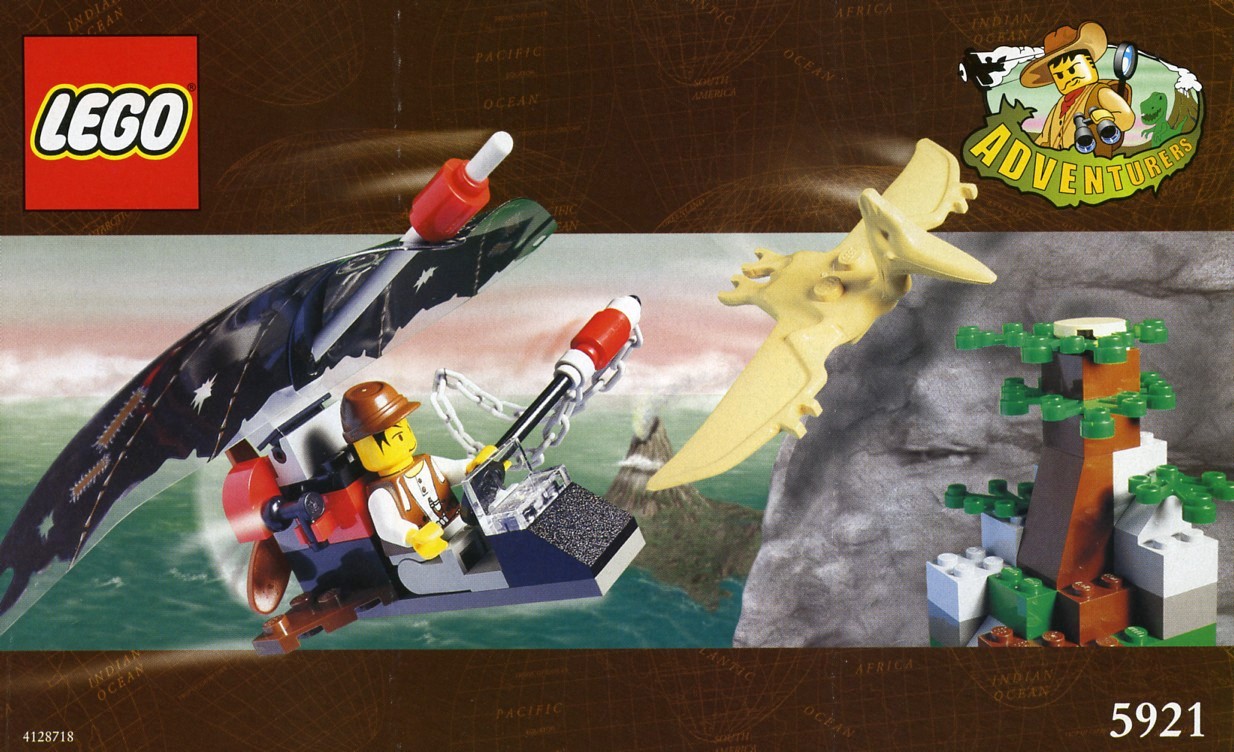
-
Pterodon Rock : (5921 Research Glider) Steep stone, devoid of plant life. The Pterodon flock nests here at night, returning to the green main island with the sun.
-
Volcano: An imposing peak with lava visible at the lip of the caldera. The slightest jostle could set off an eruption. The Cave system below is too narrow for predators to follow.
FURTHER INSPIRATION:
Brickset List of all Official Products
Brickset List of "DINOSAURS" Sister Series
Brickset List of "STUDIO" Sister Series
Compilation of tie-in short Comics
DL Link for Stud.io A 3D modeling program with the large majority of LEGO's pieces included; useful for creating custom renders for game visuals.
NOTES:
Vehicles have always featured prominently in Lego sets, and Dino Island is no exception. Before play, determine which vehicles of either Minifig faction are operational, and scatter resources to fix up the rest across the island as player rewards. If you're using a system that supports it, consider having specific vehicles negate difficult travel over specific terrain.
The caves beneath the Volcano are purposefully left without any dungeon map. What is contained beneath it, and how or why your table will seek it out is up to you - is there a mystical artifact keeping the island afloat? Ruins of a Minifig civilization that once shared the island with the Dinosaurs? A gateway to the ancient past through which the ancestors of the Dinosaurs traveled? Listen to your table discuss the possibilities, and then decide what would be the most exciting to uncover!
Additional Dinosaur Herds for desired dinos (raptors or ocean predators come to mind) could be included, but the interplay between the herds I've already written means that interacting with One affects the locations and temperament of the rest. Adding more herds in would require they weave into this tapestry, or they may as well just be set dressing.


